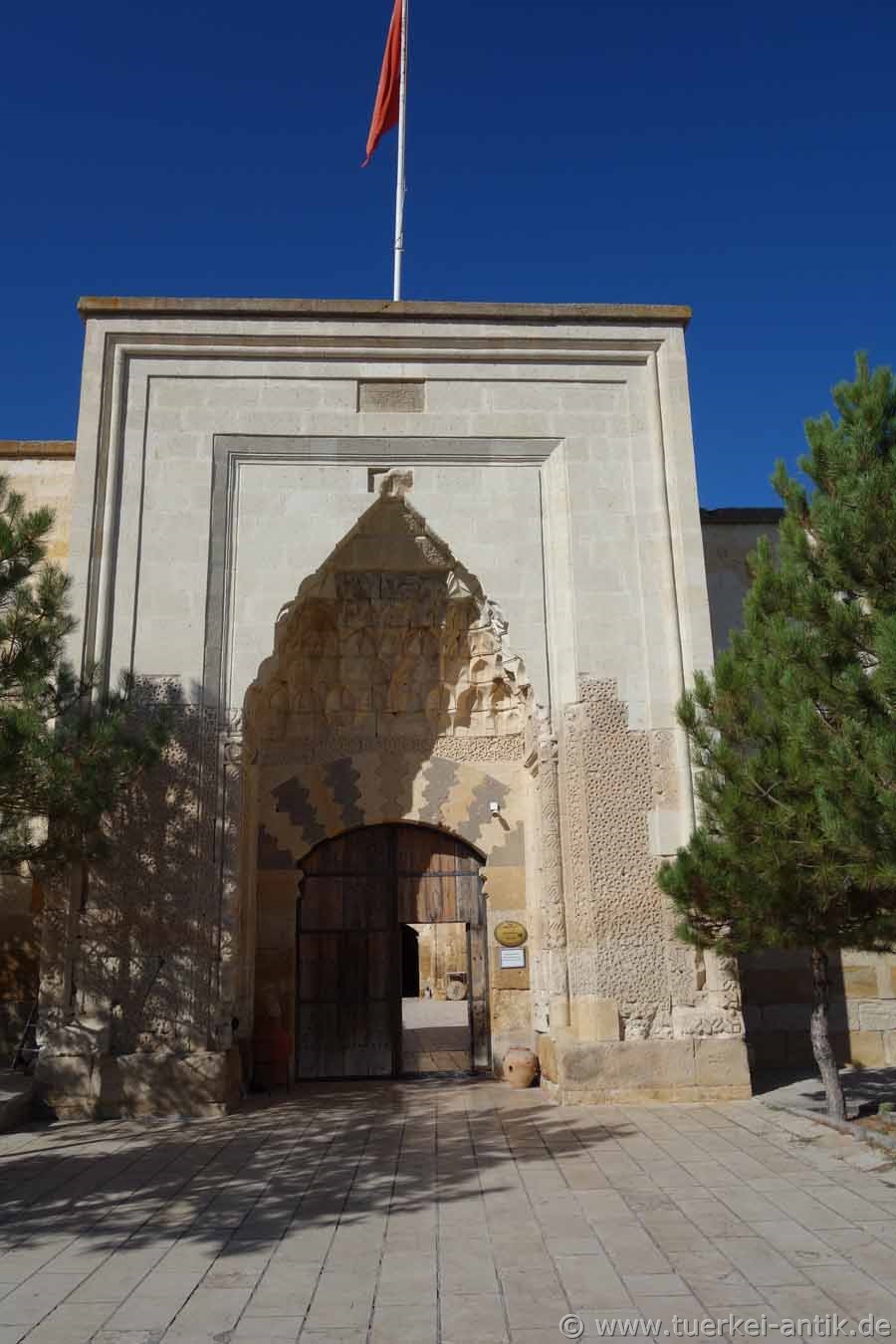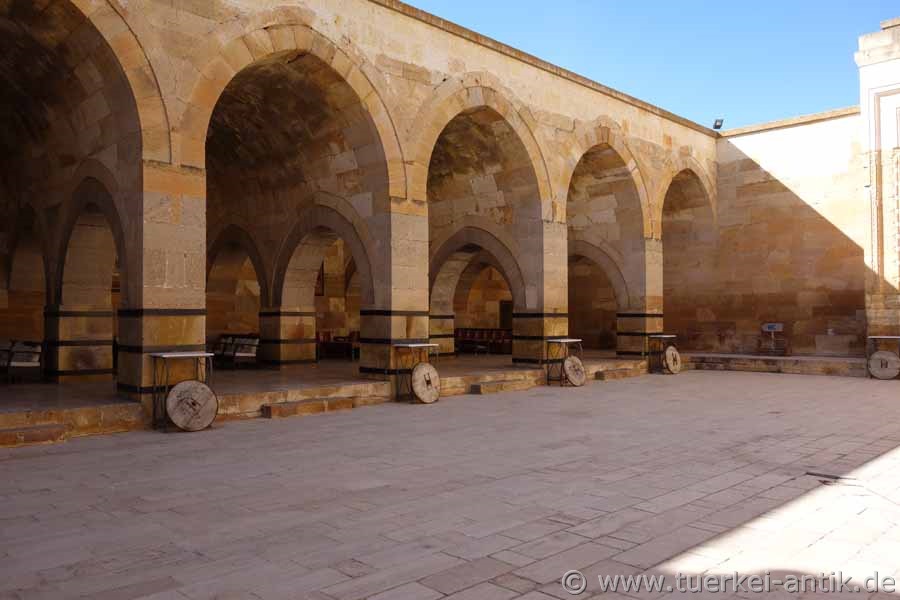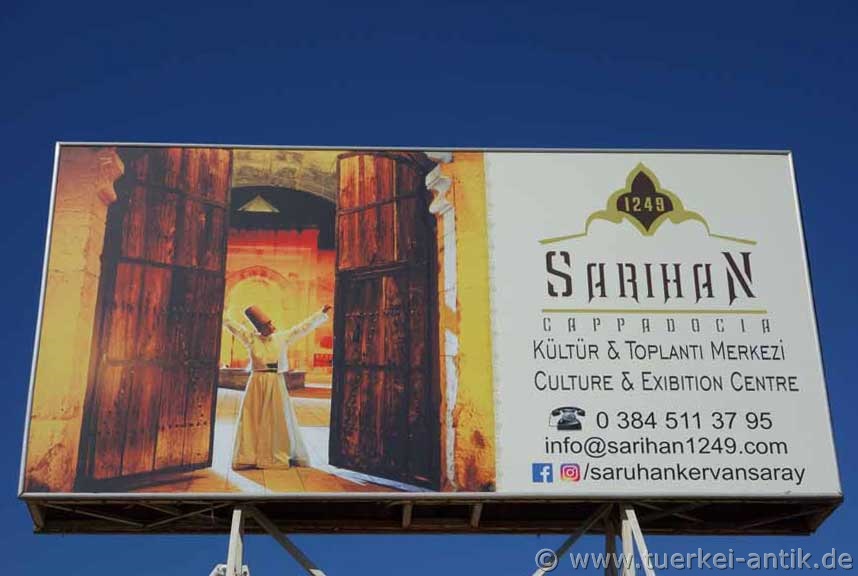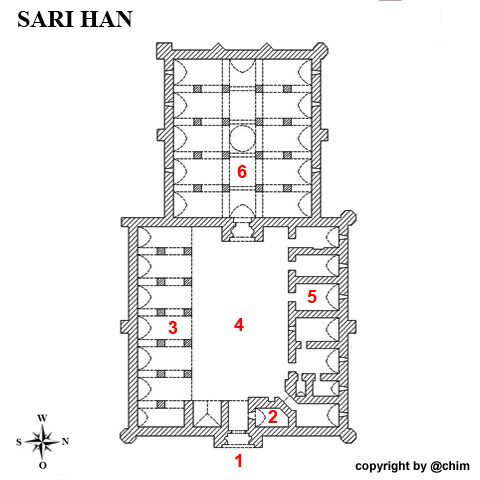 |
| Sari Han | ||||||||||||
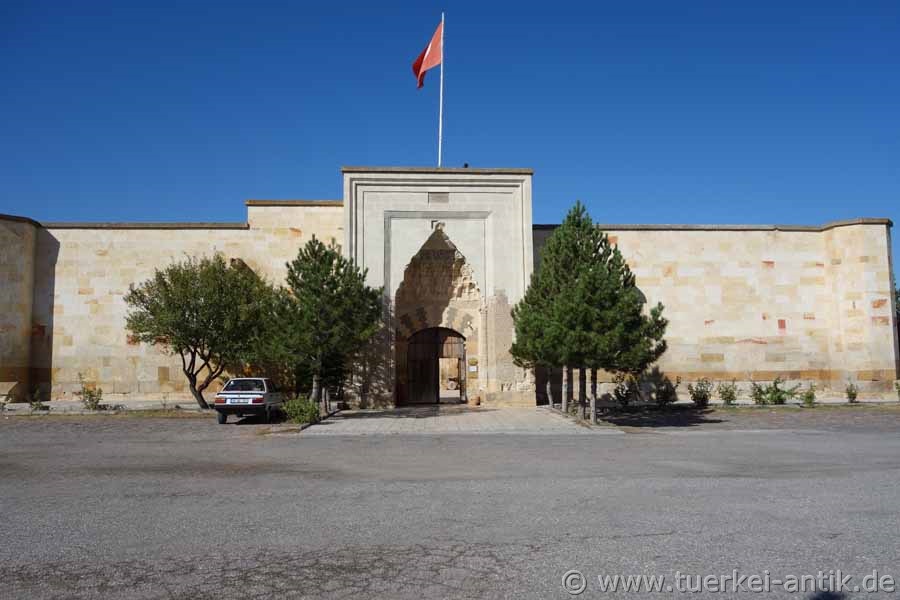 |
|
|||||||||||
| The front | ||||||||||||
|
Sarι Han is an old Seljuk caravanserai, near the town of Avanos in Cappadocia. The Han is one of the most beautiful caravanserais from the Seljuk period. The ground plan is similar to that of the Sultan Han at Aksaray. Another name of the caravanserai is Saru Han (yellow Han). |
||||||||||||
|
|
||||||||||||
|
The entrance portal |
||||||||||||
|
The east-facing Han was probably built around 1249 by Sultan Giyaseddin Keyhüsrev II as the last caravanserai of the Sedjuk Empire. Unfortunately, the usual inscription plate above the entrance portal was lost. The size of the closed hall is 570 m2, while the open courtyard in the middle measures 1120 m2. |
||||||||||||
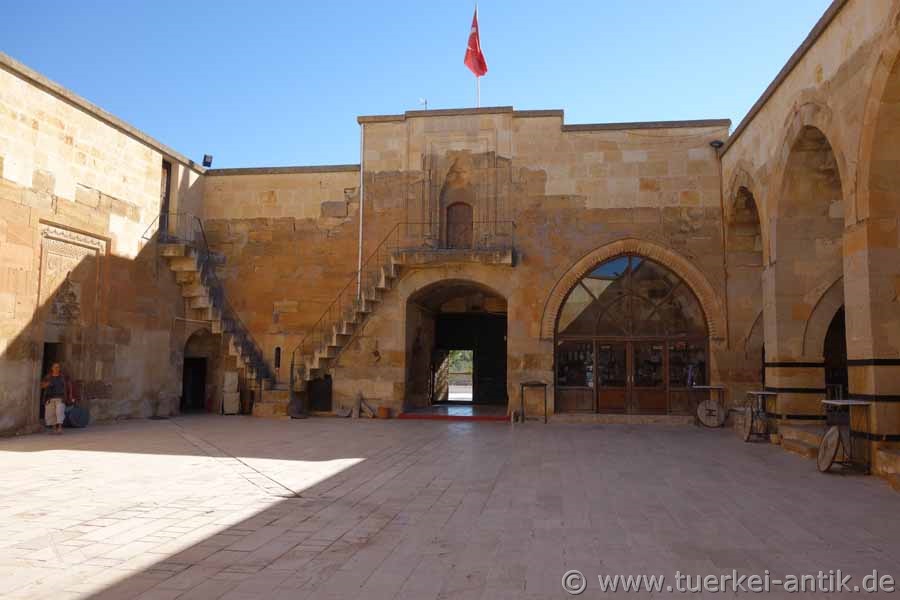 |
||||||||||||
| The mosque above the entrance portal | ||||||||||||
|
A special feature of this Han is the small mosque. Unlike many Seljuk caravanserais, it is not located at ground level in the courtyard, but on the first floor above the entrance portal. Two stairs on the inner wall lead to the mosque and to the roof of the building. |
||||||||||||
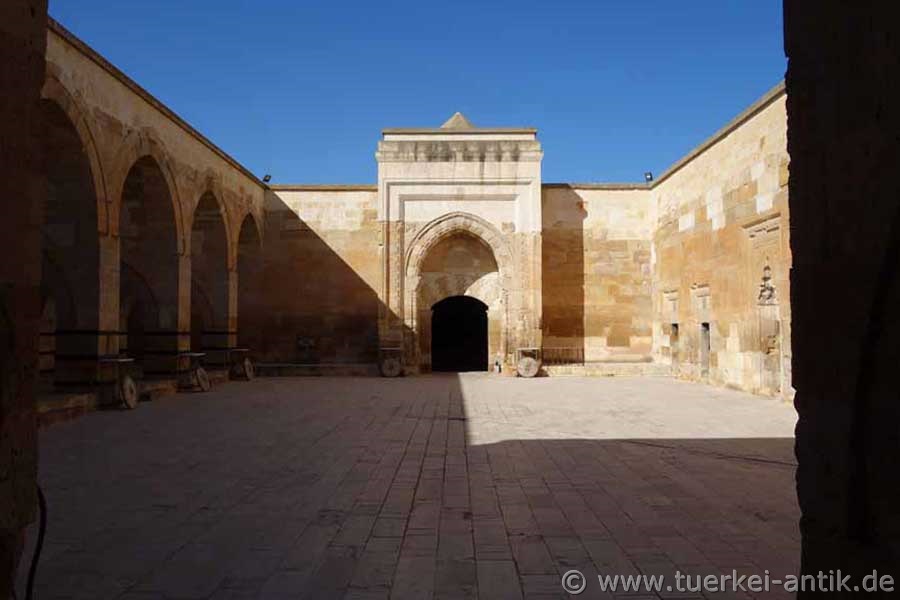 |
||||||||||||
|
In the west of the courtyard another portal leads into the closed hall measuring about 25 × 25 m. It is equipped with a simple central dome and has a central nave and five transepts on each side. |
||||||||||||
|
|
||||||||||||
| The south side of the courtyard | ||||||||||||
|
On the south side of the courtyard there are open rooms separated by arches, which were probably used as stables. On the north side there are seven closed rooms, some of which can be accessed from the courtyard through elaborately designed doors. The three western rooms are enclosed, the four eastern rooms are connected. Water pipes were found in one of them, suggesting that they contained bathrooms. The building was extensively restored in the late 1980s, using the same type of stone as the original building. |
||||||||||||
|
|
||||||||||||
|
|
||||||||||||
|
For many years, dance performances by Derwischen have been held regularly in the closed hall of the Sarı Han. |
||||||||||||
|
|
||||||||||||
| Benches for the spectators | ||||||||||||
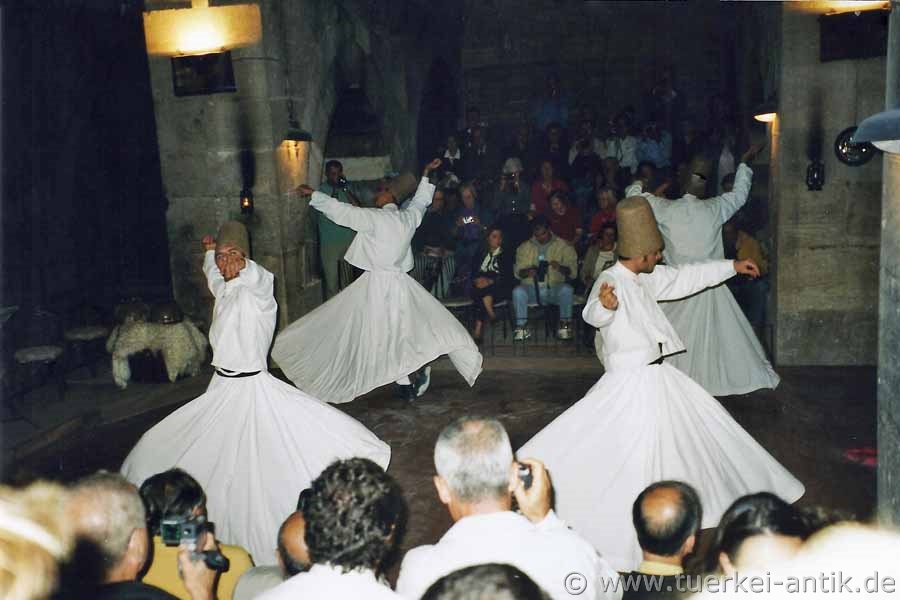 |
||||||||||||
| Dancing dervishes in the Sari Han | ||||||||||||
|
The ecstatic trance dance (sema) practiced in the Mevlevi Order of Turkey is considered one of the physical methods of falling into religious ecstasy (majdhb, fana) and coming into contact with Allah. The headgear of the Mevlevi Dervishes is called Sikke. |
||||||||||||
|
|
||||||||||||
|
||||||||||||
| Photos: @chim, Monika P. | ||||||||||||
| Translation aid: www.DeepL.com/Translator | ||||||||||||
| Source: Wikipedia and others | ||||||||||||
|
|
||||||||||||

